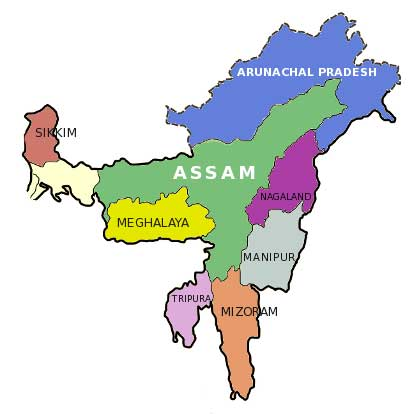Indian Society
Halam Sub-tribes Clash
- 03 Aug 2021
- 5 min read
Why in News
People of Halam sub-tribes, who took refuge in Assam following clashes with Bru refugees in north Tripura, are returning to their village Damcherra in North district of Tripura.
- The Brus came to Tripura in 1997 to escape an ethnic clash in Mizoram and started staying at six relief camps in the North District.
Key Points
- Halam Sub-tribes:
- Ethnically, Halam communities (categorised as a scheduled tribe in Tripura) belong to the Kuki-Chin tribes of Tibeto-Burmese ethnic group.
- Their language is also more or less similar to that of the Tibeto-Burman family.
- Halams are also known as Mila Kuki, though they are not at all Kukis in terms of language, culture and living style.
- Halams are divided into several sub-clans which are referred to as “Barki-Halam”.
- Major sub-clans of Halams are Koloi, Korbong, Kaipeng, Bong, Sakachep, Thangachep, Molsom, Rupini, Rangkhowl, Chorai, Lankai, Kaireng (Darlong), Ranglong, Marchafang and Saihmar.
- As per 2011 Census, their total population is 57,210 and distributed throughout the State.
- Halams live in typical "Tong Ghar" specially made of bamboo and Chan grass. Apart from plain land cultivation they still practice Jhum cultivation and depend on both the activities beside other substitute works.
- Bru Refugees:
- Bru or Reang is a community indigenous to Northeast India, living mostly in Tripura, Mizoram and Assam. In Tripura, they are recognised as a Particularly Vulnerable Tribal Group.
- In Mizoram, they have been targeted by groups that do not consider them indigenous to the state.
- In 1997, following ethnic clashes, nearly 37,000 Brus fled Mamit, Kolasib and Lunglei districts of Mizoram and were accommodated in relief camps in Tripura.
- Damcherra is Tripura’s last village before the inter-state boundary with Mizoram.
- Since then, 5,000 have returned to Mizoram in eight phases of repatriation, while 32,000 still live in six relief camps in North Tripura.
- In June 2018, community leaders from the Bru camps signed an agreement with the Centre and the two state governments, providing for repatriation in Mizoram. But most camp residents rejected the terms of the agreement.
- In January 2020, the Centre, the governments of Mizoram and Tripura and leaders of Bru organisations signed a quadripartite agreement.
- Under the pact, the Home Ministry has committed to incur the whole expenditure of settlement in Tripura.
- A package was assured in the accord that each refugee family would get:
- A plot, fixed deposit of Rs. 4 lakh, free ration and a monthly stipend of Rs. 5,000 for two years.
- In addition, each family will also be provided Rs. 1.5 lakh to construct a house.
- Related Issues:
- The northeast has had a history of ethnic conflicts — not only between the “indigenous” and “settlers” but inter-tribe too — and issues could also arise within smaller sub-groups within the same tribe.
- The decision to settle Bru Tribal People in Tripura could also throw up questions of citizenship, specifically in Assam where a process is on to define who is indigenous and who is not.
- The move on the Brus legitimises the settlement of foreigners under Citizenship (Amendment) Act too, creating conflicts with the indigenous people as well as communities that settled earlier.
- It could also lead to loss of space and revenue for other communities in Tripura.
- Further, the inter-state border disputes have come under fresh focus after the recent violent clash on Assam-Mizoram border.
Way Forward
- Considering the present conditions of Brus, the state government should ensure that the quadrilateral agreement is enforced in letter and spirit.
- However, the same agreement which provides for resettlement of Bru refugees in Tripura should be implemented keeping in mind the interests of non-Brus, so that no conflict emerges between the Bru and non-Bru communities.





